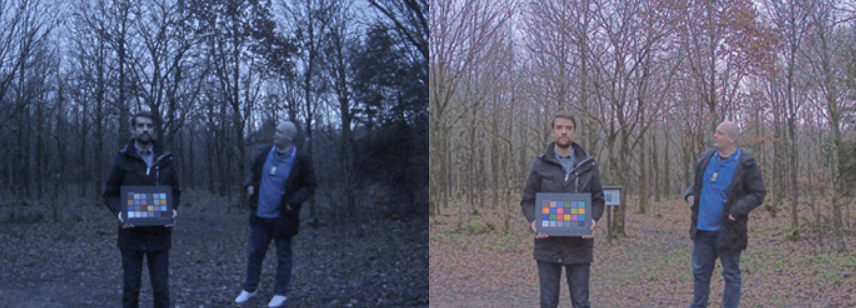In May 2019, Axis launched some new cameras which contained Lightfinder 2.0. This was slipped in quietly as a feature but nevertheless intrigued us. What exactly is it?
Lightfinder technology is geared around providing full-colour HD video, even in near darkness. The claims are that Lightfinder 2.0 provides:
- More realistic colours
- Clearer visibility of dark areas
- More details captured
- Sharper images
- Less motion blur
As most cameras now have some way of providing usable night images how impressive is Lightfinder 2.0 in this context?
Low light surveillance – the current market
Footage in low light was once a massive issue for around-the-clock surveillance. As all cameras need light to create an image, the less light the darker and noisier the image.
The use of infrared (IR) lighting, which provides black-and-white images in darkness helped to some extent. The downside of IR is that monochrome images make the identification of individuals difficult.
When Lightfinder was introduced to Axis cameras in 2011 it was a game-changer. By harnessing the existing available light in a near-dark scene to create a realistic colour image, it produced usable security footage.
Since then other manufacturers have followed suit and improved low-light performance and given their respective technologies catchy names too. For example: Bosch – Starlight; Hikvision – Darkfighter; and Mobotix – Moonlight to name a few. Some manufacturers have improved general low-light performance without branding their technology separately, like Sony (renowned for their low-light performance).
What’s changed in Lightfinder 2.0?
With the performance improvements due to Axis’ ARTPEC-7 chip set, lots.
The main difference between the original and Lightfinder 2.0 is in the detail and colour rendition.
We should mention that the original Lightfinder still produces usable video footage in low light. Take a look at the images below for a comparison. The images were taken at the same time on two P-series cameras. The one on the left uses the original Lightfinder, while the one on the right uses 2.0.

Lightfinder and Lightfinder 2.0 with comparable cameras in full darkness.
The difference in colours, details around faces and depth of field is apparent. For us, it comes down to the use case. The image on the left is enough for general observational surveillance. For scenes which demand high-quality, usable footage around-the-clock, you’d go for Lightfinder 2.0.
Visually this is a step change for low-light technology, so how has this been achieved?
Understandably Axis are quiet on what exactly goes into Lightfinder 2.0. The details they have talked about are:
- Improved sensors
- A new white balance algorithm
- Finely-tuned image processing
- Increased light sensitivity
- Colour reproduction
In terms of fine tuning, one example is: adjusting the temporal noise filter strength for better facial detection rates. This is a really useful feature which can make a camera dedicated to one task, like LPR, much more efficient.
Along with most manufacturers Axis use CMOS sensors. Their difference is using a sensor with outstanding light sensitivity alongside the right lens.
To maximise the performance of the sensor and lens, a powerful chip is required. Axis has recently publicised the launch of their new chip. You can read more about the new ARTPEC-7 chip which has increased their devices’ processing power in this blog.
How it works in action
However they’ve managed it, Lightfinder 2.0 has produced some very impressive footage like this video for example:
“Having used Axis cameras in client installations for many years, low light is always a challenge. We welcome any technologies that help us to enable better performance at night. Lightfinder 2.0 looks to improve significantly on what is already a useful capability.”
Kevin Bowyer, Technical Director
Final thoughts
Low light technology was once a problem area for IP technology. However, these new devices now produce more detailed footage with ‘real life’ colours in very low lux situations. This is great news for customers as they now have a choice of cameras with exceptional low light footage.
Some of the first cameras to feature this new technology are P1375 & P1375-E.



